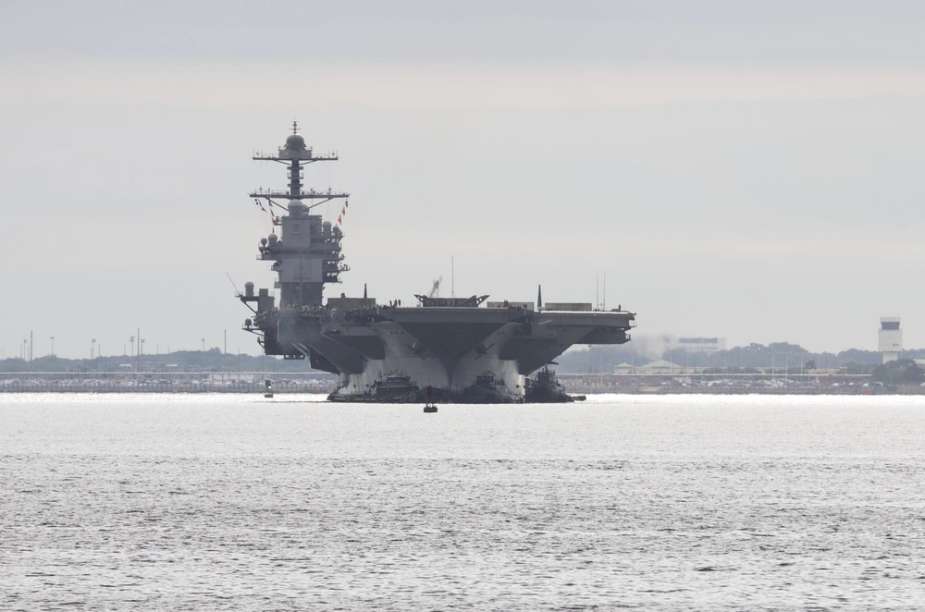Breaking news
2nd US Navy's aircraft carrier USS Gerald R Ford arrives in East Med.
The U.S. 5th Fleet has confirmed the arrival of a second carrier strike group (CSG) in the Middle East, joining forces already in the region amidst the ongoing conflict between Israel and Hamas in Gaza. The aircraft carrier USS Gerald R. Ford, along with a fleet of ships, has been deployed by the US Navy. This deployment was previously discussed on October 12, 2023, on Navy Recognition.
Follow Navy Recognition on Google News at this link
 US Navy's aircraft carrier USS Gerald R. Ford (Picture source: US DoD)
US Navy's aircraft carrier USS Gerald R. Ford (Picture source: US DoD)
The arrival of the USS Gerald R. Ford comes as the other US aircraft carrier, the Dwight D. Eisenhower Carrier Strike Group, has reached the Red Sea. The two aircraft carriers provide coverage of the area around Israel, serving as a deterrent to any potential future belligerents, such as Hezbollah in Lebanon, for example.
Beyond the deterrent effect, there is also a practical side. Indeed, the Houthis in Yemen have already fired ballistic missiles toward Israel, which were intercepted, as we reported on Navy Recognition on October 20, 2023.
Thus, the deployment includes the USS Gerald R. Ford, the lead ship of the latest class of nuclear-powered aircraft carriers in the US Navy. The Gerald R. Ford class marks a significant advancement in aircraft carrier technology and is expected to gradually replace the current Nimitz-class carriers. The USS Gerald R. Ford (CVN-78) was commissioned in 2017, and its successor, the USS John F. Kennedy (CVN-79), is scheduled to join the fleet in 2025.
Spanning over 1,000 feet in length with a beam extending to 256 feet on the flight deck, the Gerald R. Ford-class carriers feature several technological innovations. They are equipped with the Electromagnetic Aircraft Launch System (EMALS) and the Advanced Arresting Gear (AAG), enhancing aircraft launch and landing capabilities.
Automation is a key aspect of the Ford-class design, in line with modern naval architecture trends that favor operational efficiency and the potential reduction of crew requirements. The carriers are fitted with sophisticated radar systems, including the AN/SPY-3 and AN/SPY-4, with plans to outfit the USS John F. Kennedy with the AN/SPY-6 radar to improve its search capabilities.
Powered by two Bechtel A1B nuclear reactors, these carriers can exceed speeds of 30 knots and can operate for approximately 25 years before needing to refuel. Designed with a reduced radar cross-section, the Ford-Class can accommodate more than 75 aircraft and features an enhanced flight deck to streamline the movement of aircraft and armaments.
Previously, it had been announced that the aircraft carrier was heading towards the Mediterranean Sea, as initially planned. However, it is now clear that its direction has been modified more towards the Middle East and the Israel-Hamas conflict rather than the Mediterranean. The flotilla accompanying the USS Gerald R. Ford on its deployment to the Middle East includes a group of ships, among them two guided-missile destroyers and a guided-missile cruiser.























